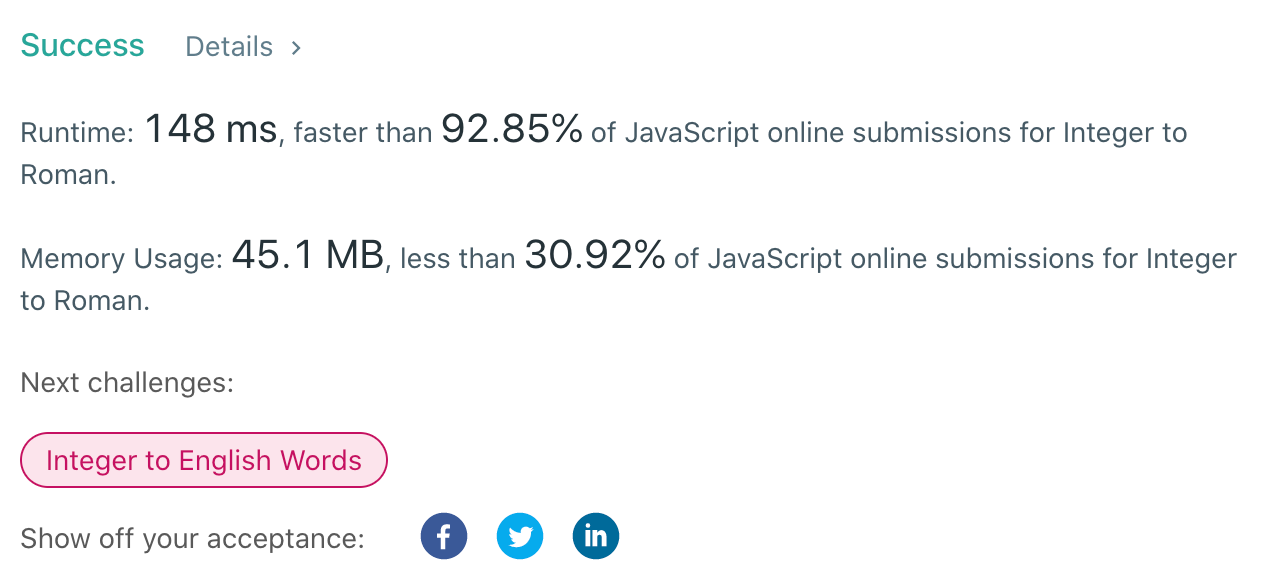Description
Roman numerals are represented by seven different symbols: I, V, X, L, C, D, and M.
**Symbol** **Value**
I 1
V 5
X 10
L 50
C 100
D 500
M 1000
For example, 2 is written as II in Roman numeral, just two one's added together. 12 is written as XII, which is simply X + II. The number 27 is written as XXVII, which is XX + V + II.
Roman numerals are usually written largest to smallest from left to right. However, the numeral for four is not IIII. Instead, the number four is written as IV. Because the one is before the five we subtract it making four. The same principle applies to the number nine, which is written as IX. There are six instances where subtraction is used:
-
Ican be placed beforeV(5) andX(10) to make 4 and 9. -
Xcan be placed beforeL(50) andC(100) to make 40 and 90. -
Ccan be placed beforeD(500) andM(1000) to make 400 and 900.
Given an integer, convert it to a roman numeral.
Example 1:
Input: num = 3
Output: "III"
Example 2:
Input: num = 4
Output: "IV"
Example 3:
Input: num = 9
Output: "IX"
Example 4:
Input: num = 58
Output: "LVIII"
Explanation: L = 50, V = 5, III = 3.
Example 5:
Input: num = 1994
Output: "MCMXCIV"
Explanation: M = 1000, CM = 900, XC = 90 and IV = 4.
Constraints:
1 <= num <= 3999
Solution
First of all, we're going to create a map with all possible Roman-Integer pairs.
The algorithm is going through this map from biggest to smallest starting from M to I and keeping track of a result variable.
The main algorithm is using the division num by map[key] and modulus operator. The division tells us how many particular symbols do we need to repeat. And the modulus operator helps us to change the num.
The easiest way to understand this solution is to look at an example :) Let's imagine we need to convert 2439:
In this solution, we can do some improvements:
-
We can return the result if the num equals
0 -
We can check whether the division equals
0or not, if not we don't need to repeat anything

The time complexity is going to be O(n), there is n is the number of Roman numeral characters. And the space complexity is O(1).
Hope it was useful for you!
Thanks for reading!